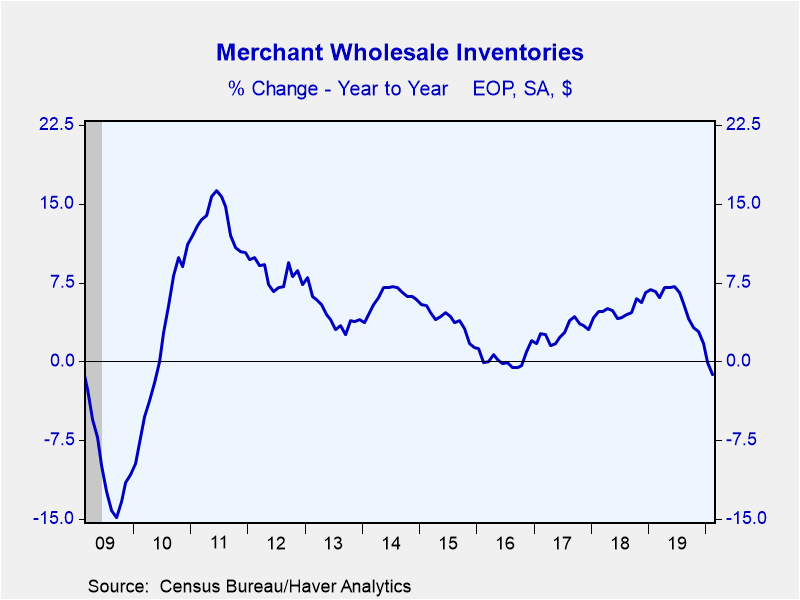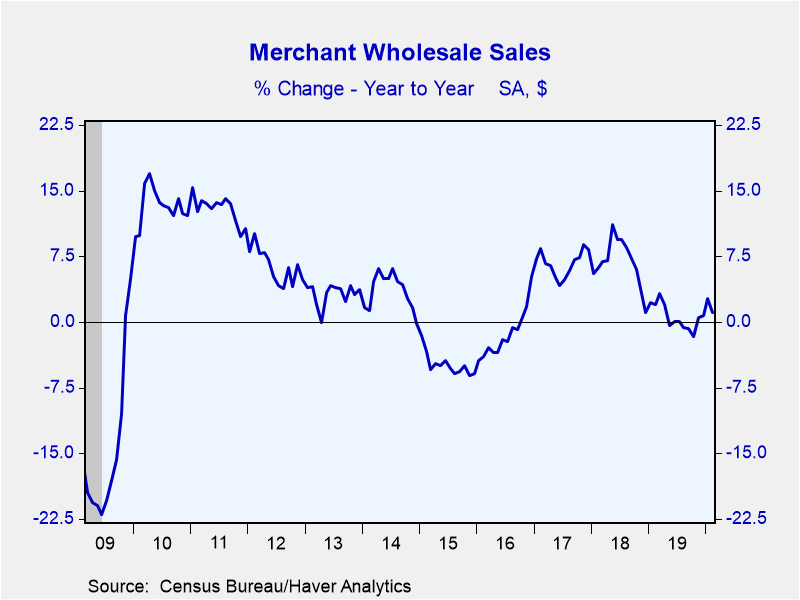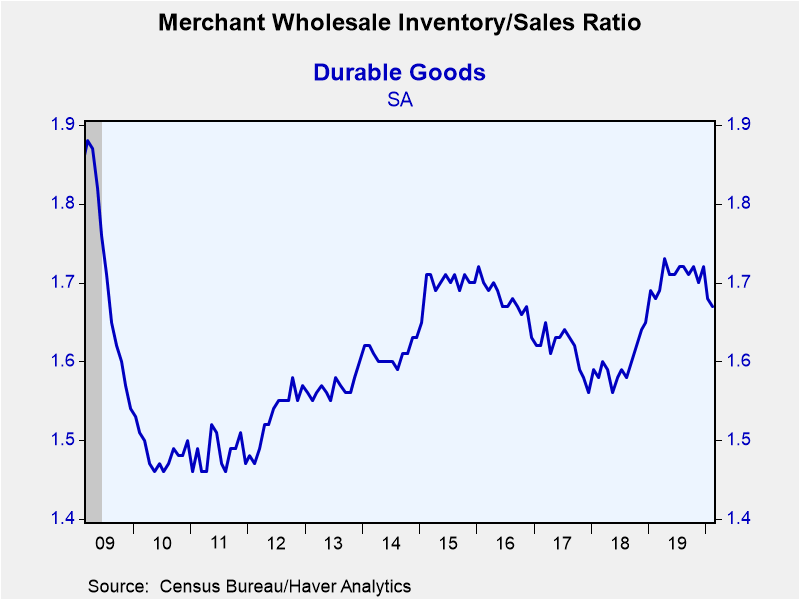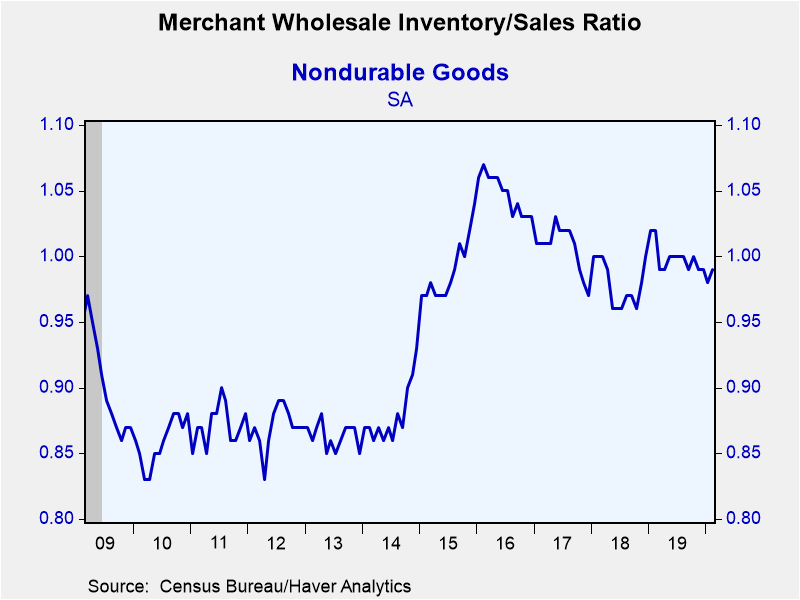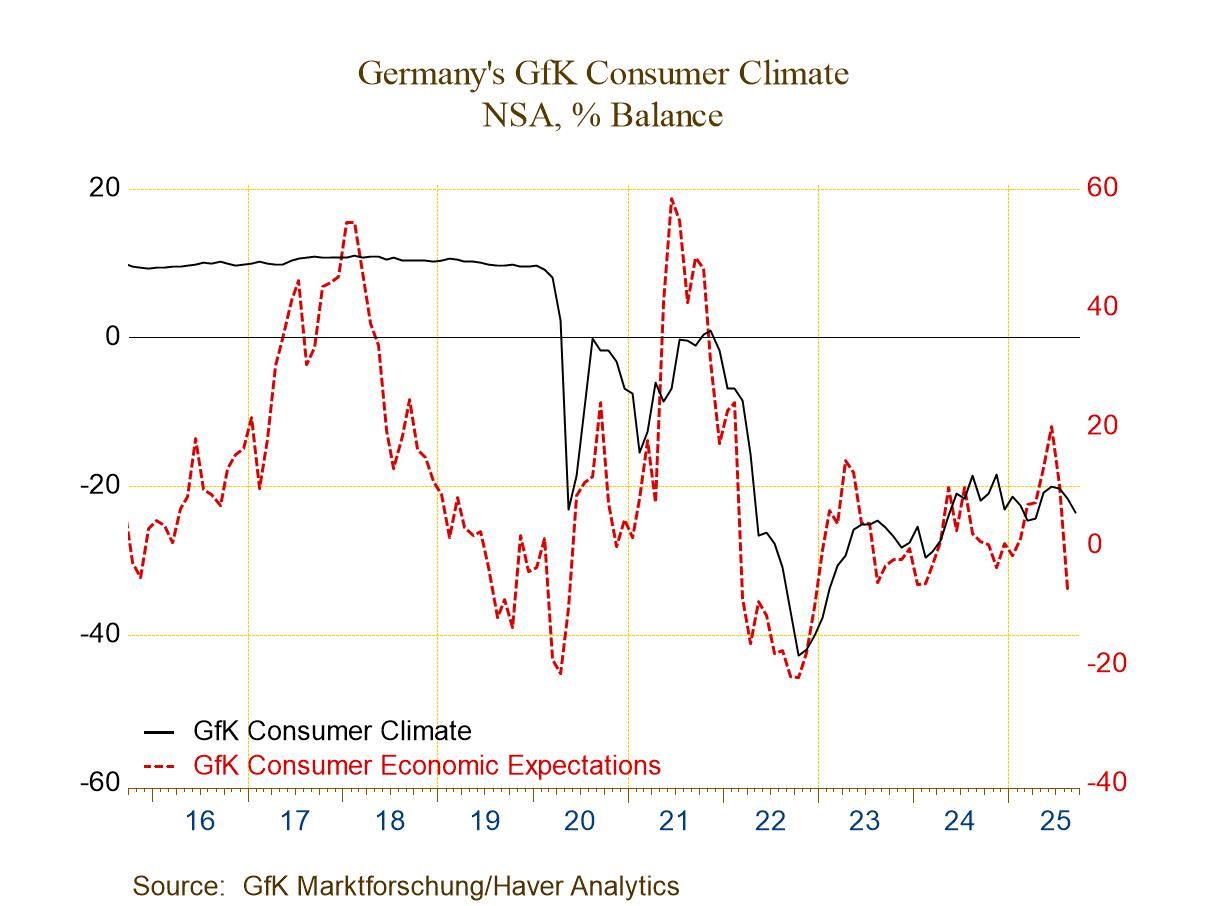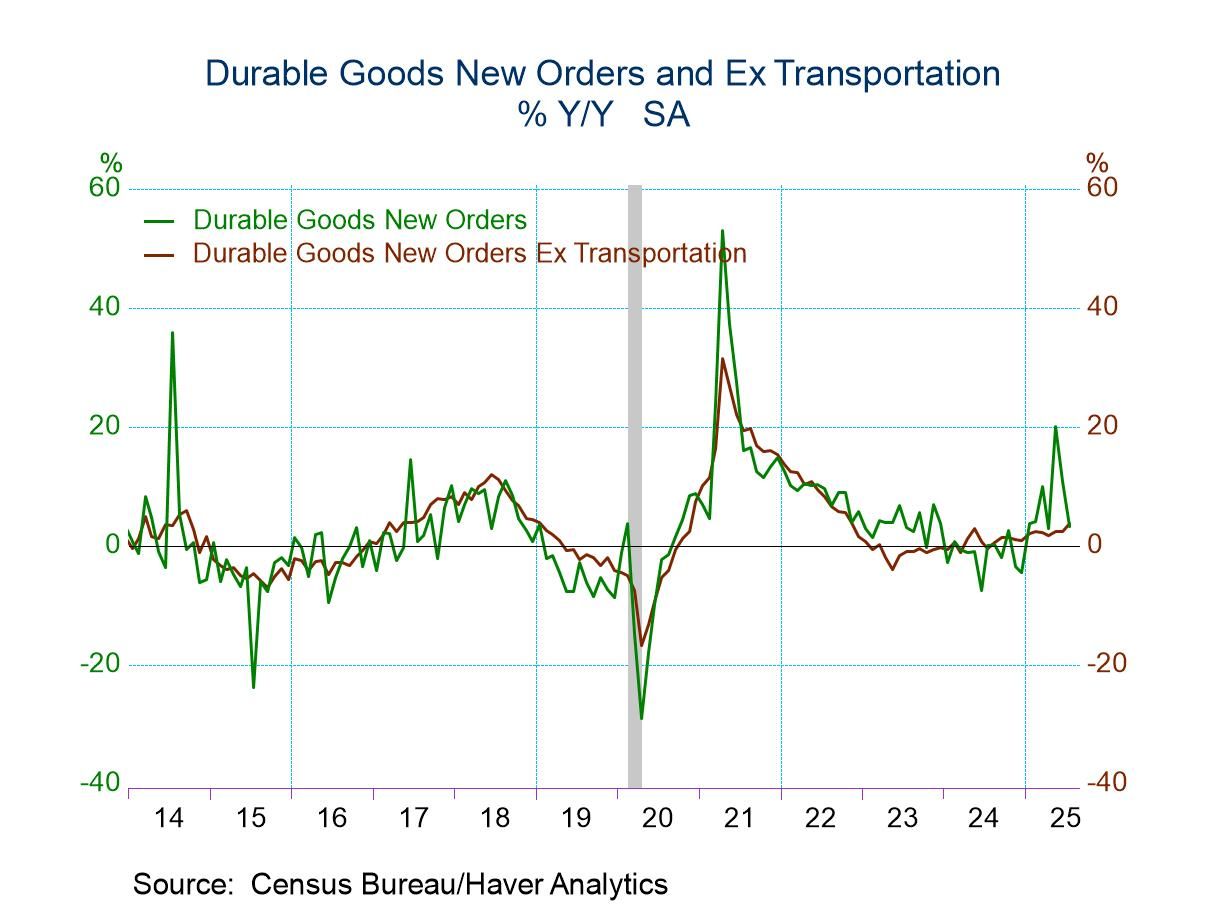 Global| Apr 09 2020
Global| Apr 09 2020Wholesale Inventories and Sales Decline Ahead of the Coronavirus
by:Tom Moeller
|in:Economy in Brief
Summary
Wholesale inventories fell 0.7% (-1.3% y/y) during February following a 0.6% decline in January, revised from -0.4%. The advance report issued on March 26 indicated a 2.2% inventory decline for February. A 0.5% fall had been expected [...]
Wholesale inventories fell 0.7% (-1.3% y/y) during February following a 0.6% decline in January, revised from -0.4%. The advance report issued on March 26 indicated a 2.2% inventory decline for February. A 0.5% fall had been expected in the Informa Global Markets Survey.
Inventories of both durable and nondurable goods fell. Durable goods inventories decreased 0.8% (-2.1% y/y) in February after a 0.6% January decline. The February decline was broad-based. Inventories of motor vehicles & parts dropped 1.9% (-2.5% y/y) while computing equipment inventories fell 3.2% (-11.1% y/y). Machinery inventories declined 0.4% (+1.1 y/y) and electrical goods inventories also eased 0.4% (-5.9% y/y). Inventories of nondurable goods fell 0.4% (0.0% y/y) in February after a 0.6% decline in January. Farm product inventories fell 3.8% (-6.8% y/y) while petroleum inventories were off 5.8% (-9.2% y/y) with lower prices. Grocery product inventories rose 1.4% (6.6% y/y).
Also falling at the wholesale level were sales by 0.8% (+1.1% y/y) after a 1.3% rise in January, revised from 1.6%. The Action Economics Forecast Survey expected a 0.4% decline.
The decline in sales was led by a 1.6% drop (+3.2% y/y) in nondurable goods which followed a 1.2% increase. It was paced by a 6.1% decline (+5.2% y/y) in petroleum sales. Apparel sales fell 0.8% (-8.0% y/y) and chemical sales were off 0.9% (-5.2% y/y). Durable goods sales were up 0.1% (-1.0% y/y) following a 1.4% rise. Motor vehicle sales gained 2.0% (-1.4% y/y) but computing equipment sales fell 3.7% (-2.4% y/y). Machinery sales improved 1.7% (1.8% y/y) while sales of furniture rose 0.9% (4.2% y/y).
The inventory-to-sales (I/S) ratio at the wholesale level held steady at 1.31 in February. The durable goods I/S ratio fell to 1.67 and it was down from a March high of 1.73. The nondurable goods I/S ratio rose slightly to 0.99 but has been moving sideways since early last year.
The wholesale trade figures are available in Haver's USECON database. The expectations figure for inventories is contained in the MMSAMER database. Expectations for sales are in the AS1REPNA database.
| Wholesale Sector - NAICS Classification (%) | Feb | Jan | Dec | Feb Y/Y | 2019 | 2018 | 2017 |
|---|---|---|---|---|---|---|---|
| Inventories | -0.7 | -0.6 | -0.0 | -1.3 | 1.7 | 6.5 | 3.0 |
| Sales | -0.8 | 1.3 | -0.4 | 1.1 | 0.6 | 6.8 | 6.7 |
| I/S Ratio | 1.31 | 1.31 | 1.33 | 1.34 (Feb '19) | 1.34 | 1.28 | 1.30 |
Tom Moeller
AuthorMore in Author Profile »Prior to joining Haver Analytics in 2000, Mr. Moeller worked as the Economist at Chancellor Capital Management from 1985 to 1999. There, he developed comprehensive economic forecasts and interpreted economic data for equity and fixed income portfolio managers. Also at Chancellor, Mr. Moeller worked as an equity analyst and was responsible for researching and rating companies in the economically sensitive automobile and housing industries for investment in Chancellor’s equity portfolio. Prior to joining Chancellor, Mr. Moeller was an Economist at Citibank from 1979 to 1984. He also analyzed pricing behavior in the metals industry for the Council on Wage and Price Stability in Washington, D.C. In 1999, Mr. Moeller received the award for most accurate forecast from the Forecasters' Club of New York. From 1990 to 1992 he was President of the New York Association for Business Economists. Mr. Moeller earned an M.B.A. in Finance from Fordham University, where he graduated in 1987. He holds a Bachelor of Arts in Economics from George Washington University.


